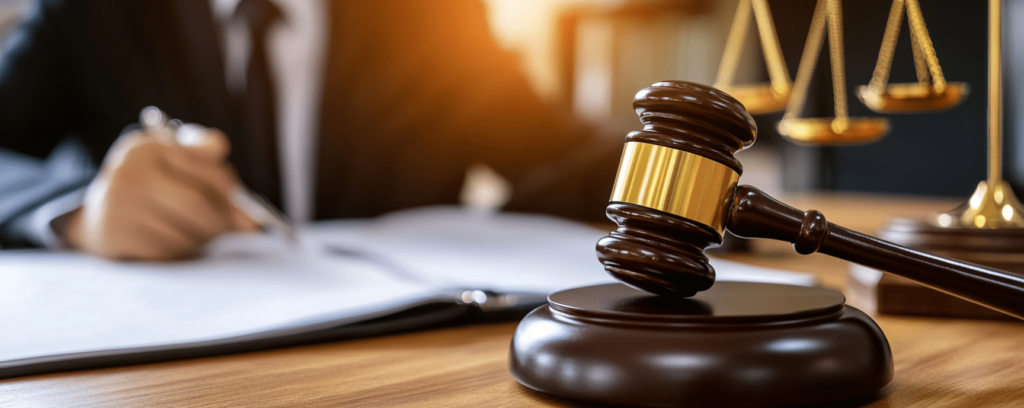Your Guide to Getting a Fair Settlement from a Car Accident Claims!
Last updated Wednesday, February 19th, 2025

Wondering how to get a fair settlement from a car accident? A car accident settlement covers damages like medical bills, lost wages, and vehicle repairs. This guide explains what you need to know and do to secure your compensation from a settlement of a car accident.
Key Takeaways
- Car accident settlements require comprehension of processes and potential pitfalls, as insurance companies often propose lower offers than needed.
- Collecting evidence and timely filing of claims are crucial steps that significantly influence settlement outcomes in car accident cases.
- Engaging an experienced car accident lawyer greatly enhances the chances of obtaining a fair settlement by ensuring proper representation and guidance during negotiations.
Understanding Car Accident Settlements
A car accident settlement is essentially an agreement between the accident victim and the insurance company, designed to cover the damages incurred due to the accident. The primary purpose of such a settlement is to ensure that all related damages, including medical expenses, lost wages, and property damage, are adequately compensated. However, achieving a fair settlement often requires a deep understanding of the process and the potential pitfalls.
Insurance companies, while tasked with paying for damages, often offer low settlements. They negotiate with the at-fault party’s insurer to settle claims, which can sometimes lead to lower offers than what is fair. This is where the guidance of an experienced car accident lawyer becomes invaluable. A lawyer can help you navigate the complex settlement process, ensuring that you receive appropriate compensation for your losses.
Once the settlement negotiations are complete, both parties will reach an agreement. They then enter into a settlement agreement. This agreement outlines the compensation terms and includes a release clause where you agree not to pursue further claims related to the accident.
Knowing the mechanics of a car accident settlement is vital for effective compensation pursuit. When another party is responsible for your injuries and property damage, you are entitled to seek reimbursement for your expenses.
Steps to File a Car Accident Claim
Filing a car accident claim entails multiple steps, starting with notifying the at-fault driver’s insurance company. The process involves submitting the claim, investigating the case, and reviewing the insurance policy to confirm coverage of all damages.
Timely and precise filing greatly influences the settlement outcome, highlighting the importance of comprehending each step in detail.
Gathering Evidence
Collecting evidence is fundamental in substantiating your car accident claim. Immediately after the accident, call 911 to report the incident and get a police report, which serves as an official record. Gather relevant documents like medical bills and other evidence to support your claim, making it easier for insurance adjusters to assess the situation accurately.
Photos of the accident scene, witness statements, and other documentation provide a clear picture of the events. These pieces of evidence help build a strong case, ensuring all aspects of the accident are covered and the negligent party is held accountable.
Filing the Claim

Exercise caution if an insurance adjuster approaches you at the scene; avoid providing statements or signing documents without consulting your lawyer. Once your claim is reviewed, the insurance company may approve or deny it. Approval indicates agreement on coverage but not necessarily fair compensation. Drafting a settlement agreement outlining the terms becomes essential at this stage.
The claims process can be intricate, with various factors influencing the outcome. Ensuring that all documents are in order and that the claim is filed promptly can significantly impact the settlement process.
Investigating the Accident
Once a claim is filed, the insurance company begins a thorough investigation to prevent fraud and ensure fair claim handling. This investigation involves reviewing the accident scene, gathering evidence such as police reports, witness statements, and photographs, and determining liability. Insurance adjusters might visit the accident scene to gain a clearer understanding of how the incident occurred. Witness statements can provide critical insights into the circumstances of the accident, helping to evaluate liability accurately.
Determining liability is crucial in the investigation process, involving the assessment of comparative negligence if both parties share fault. Medical records help establish the severity of injuries and their impact post-accident. Occasionally, the adjuster may request an independent medical examination to evaluate the injuries.
The investigation process is detailed and thorough, ensuring that all aspects of the accident are considered. This helps in achieving a fair settlement that accurately reflects the damages incurred.
Types of Damages Recoverable in Car Accident Settlements
Knowing the types of damages recoverable in car accident settlements is key to pursuing fair compensation. Damages are usually categorized into economic and non-economic types, each covering different aspects of the losses incurred.
Economic Damages
Economic damages refer to measurable financial losses such as medical expenses, lost wages, and repair costs. These damages are quantifiable and require thorough documentation to support the claim during negotiations. For instance, medical bills, receipts for vehicle repairs, and records of lost income are crucial in demonstrating the financial impact of the accident.
Accurate documentation of expenses ensures fair compensation for out-of-pocket costs. Keeping all relevant documents organized and readily available is crucial during the settlement process.
Non-Economic Damages
Non-economic damages encompass intangible losses that do not have a direct monetary value but significantly impact the victim’s life. These include pain and suffering, emotional distress, and loss of enjoyment of life. The impact of the accident on the victim’s quality of life and lifestyle can significantly influence the quantification of non-economic damages.
Quantifying non-economic damages can be challenging due to their subjective nature and case-by-case variability. However, grasping their significance and evaluation methods is key to achieving a comprehensive settlement.
Calculating the Settlement Amount
Calculating the settlement amount involves determining both economic and non-economic damages accurately. This process is crucial for achieving a fair settlement, as it ensures that all losses are accounted for and compensated appropriately.
Two common methods for calculating non-economic damages are the multiplier method and the per diem method.
The Multiplier Method
The multiplier method estimates non-economic damages based on injury severity by multiplying total economic damages by a number, usually between 1.5 to 5. Factors influencing the multiplier include injury extent and its impact on daily life and earning capacity.
Using the multiplier method provides a standardized way to calculate non-economic damages, ensuring that the compensation reflects the injuries’ true impact.
The Per Diem Method
The per diem method assigns a daily compensation amount for each day the victim suffers from their injuries following the accident. This method provides a structured way to provide financial compensation to victims for ongoing pain and suffering, reflecting close to what they might earn daily if the accident had not occurred.
Assigning a daily rate through the per diem method helps quantify the victim’s ongoing pain and distress, ensuring fair compensation for their suffering.
Factors Influencing Settlement Timelines
Several factors influence the timeline for reaching a car accident settlement. Severe injuries may prolong the process due to extensive medical treatment, while minor accidents with clear liability often settle within weeks or a few months.
Complex cases involving multiple parties involved or disputed liability can extend the settlement process to several years. If a settlement agreement cannot be reached, the case may need to be settled in court, which can further delay the process.
Negotiating a Fair Settlement
Negotiating a fair settlement is crucial in the car accident settlement process. The insurer must first acknowledge fault. An experienced car accident lawyer can maximize the settlement value and navigate negotiations, ensuring you are not taken advantage of and your rights are defended.
Claimants should establish their desired and minimum settlement amounts before negotiations. A demand letter detailing the plaintiff’s case and expenses is essential. Since insurers often present low initial offers, it’s crucial not to accept them immediately.
Persistence and patience are vital during negotiations. While insurance companies may use delay tactics, staying firm can lead to better offers. Engaging in negotiations after sending the demand letter can help secure a fair settlement.
What to Do If the Insurance Company Denies Your Claim
If the insurance company denies your claim, review the denial letter to understand the reasons. Claims can be denied for lack of evidence, policy exclusions, non-coverage, or errors in the claim.
Filing an appeal addresses the specific reasons for the denial. Consulting a personal injury lawyer is beneficial for navigating appeals, especially with an uncooperative insurer. Alternative dispute resolution methods like mediation can help settle disputes without going to court.
In cases of persistent denial, filing a personal injury lawsuit may compel the insurance company to negotiate. If settlement negotiations fail, a lawsuit might be the next step to seek compensation.
Collecting Your Settlement
Once both parties agree on liability and compensation, drafting a settlement agreement is necessary. To collect your settlement, the insurance company issues a check after you sign a release; your lawyer deducts fees before you receive payment. This agreement prevents future legal actions regarding the case.
Understanding the payment process and ensuring all expenses are covered is crucial. Consulting with your lawyer can clarify doubts and ensure a smooth process.
Working with a Car Accident Lawyer

A car accident attorney can provide valuable support throughout this process, and car accident lawyers can also play a crucial role in ensuring your rights are protected.
Insurance representatives prioritize their company’s interests, so having a lawyer ensures proper representation of your interests. Attorneys bring valuable knowledge, helping avoid critical missed steps. Working on a contingency basis means clients only pay if they win a settlement.
Hiring a lawyer often secures a significantly higher settlement compared to initial insurance offers. Prompt evidence-gathering and swift medical treatment can expedite the settlement process.
Frequently Asked Questions
What is a car accident settlement?
A car accident settlement is an agreement between the victim and the insurance company that compensates for damages such as medical expenses, lost wages, and property damage. This resolution aims to provide financial relief following the incident.
What should I do immediately after a car accident?
After a car accident, it is essential to call 911 to report the incident and obtain a police report. Additionally, gather relevant documents and evidence to support your claim.
How are non-economic damages calculated?
Non-economic damages are primarily calculated using the multiplier method, which applies a factor between 1.5 and 5 to economic damages, or the per diem method, which assigns a daily rate for suffering. These methods aim to quantify intangible losses like pain and suffering effectively.
What if the insurance company denies my claim?
If your insurance claim is denied, carefully review the denial letter to grasp the underlying reasons. You have options such as filing an appeal, engaging in alternative dispute resolution, or pursuing a personal injury lawsuit if warranted.
How can a car accident lawyer help me?
A car accident lawyer can effectively navigate the complex claims process, negotiate with insurance companies, and protect your rights, ultimately maximizing your settlement. This allows you to concentrate on your recovery without the added stress of legal issues.










